Speaker
Description
MXenes, a novel class of two-dimensional (2D) materials, have garnered significant attention due to their remarkable antibacterial properties. Among them, Ti₃C₂Tₓ stands out as the most extensively studied representative, demonstrating notable antibacterial activity [1]. The antimicrobial effects of MXenes are primarily attributed to several key mechanisms: oxidative stress, photothermal therapy, and physical disruption of bacterial membranes [2]. They also exhibit strong photothermal conversion efficiency, enabling effective bacterial eradication through localized heating under near-infrared (NIR) light exposure [3]. These unique characteristics position MXenes as promising candidates for the development of next-generation antibacterial therapies and coatings.
This study investigates the antibacterial efficacy of various MXene formulations (Ti3C2, V2C and Nb2C) against S. aureus and E. coli using diffusion-based and dilution-based assays. While disk diffusion and drop dilution methods did not reveal significant antimicrobial activity, broth microdilution, and time-kill kinetics assays demonstrated a concentration-dependent antibacterial effect. Time-kill kinetics assays revealed MXene-mediated bacterial reduction over 4 and 24 hours, confirming time- and concentration-dependent effects. Spectrophotometric analysis, however, was limited due to interference from MXene-induced turbidity, restricting quantitative assessments at higher concentrations. Furthermore, biofilm inhibition was investigated using the crystal violet assay, which demonstrated that MXene-integrated membranes impeded bacterial adherence only at concentrations of 2000 µg/mL.
At concentrations ranging up to 200 µg/mL, MXenes exhibited considerable cytotoxicity to mammalian cells, limiting their potential for direct use as antimicrobial agents. To address this challenge, photothermal therapy (PTT) was explored as a viable strategy. Upon exposure to near-infrared (NIR) laser irradiation, MXenes effectively converted light into heat, resulting in bacterial membrane disruption and microbial death. This approach enabled the use of significantly lower MXene concentrations (50–100 µg/mL), which have been reported to be biocompatible. Membrane integrity assays, including propidium iodide uptake and colony-forming unit (CFU) quantification, confirmed the structural damage caused by this treatment. These findings suggest that MXene-based PTT holds great promise as an antibacterial strategy, overcoming the limitations associated with high MXene concentrations. The study underscores MXenes as promising candidates for next-generation antimicrobial materials, with an emphasis on optimizing their stability and dispersion in biological media for broader applications.
References:
[1] Xie, L., et al., ACS Nano, 10(3) (2016) 3267–3274.Authors, Journal, Issue (Year) page
[2] Zhang, L., et al., Frontiers in Bioengineering and Biotechnology, 12 (2024) 133853
[3] Wang, X., et al., Advanced NanoBiomed Research, 4(1) (2024) 2200033

